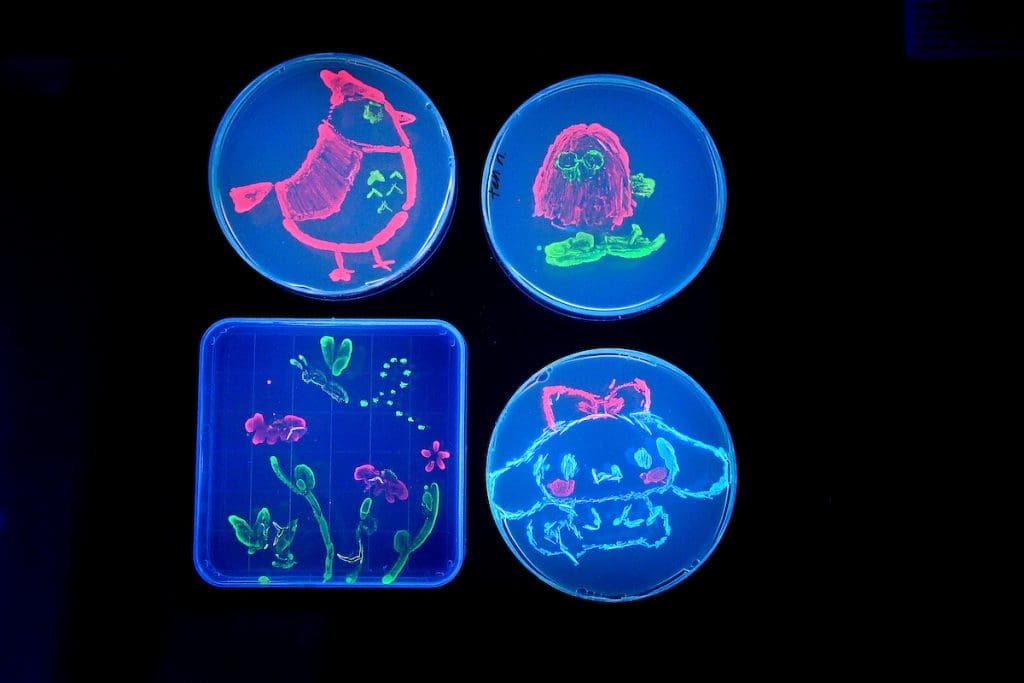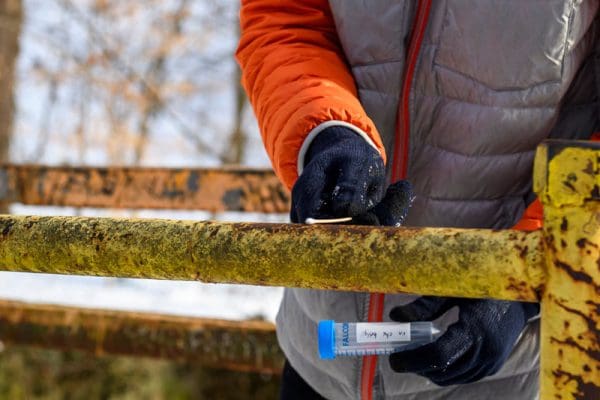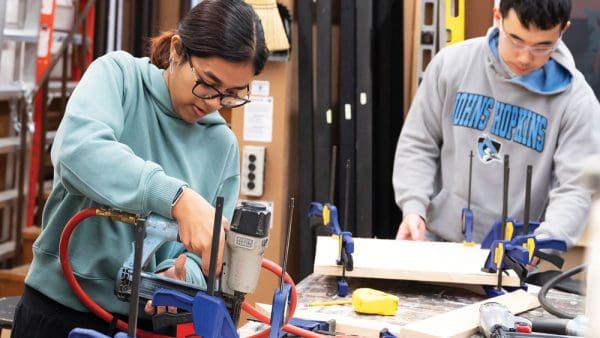
This year’s January Intersession was cold and snowy, but students in From Proteins to Living Art were sweating with concentration while loading DNA samples onto gels for electrophoresis. “I’m shaking in my boots!” one student yelped. The students spent two weeks painstakingly pipetting and cloning to make fluorescent E. coli bacteria and create decorative, glowing, agar art.
The class was taught by doctoral candidates Hannah Haller-Hidalgo (Program in Cell, Molecular, Developmental and Biophysics) and Taylor Devlin (Program in Molecular Biophysics). They created the class so students from any major could learn basic lab skills and etiquette in a fun, low-stress environment.
A fun way to learn about labs
Agar art is made by culturing microbes in patterns on a jelly-like growth medium, agar. It’s popular on social media, and Haller-Hidalgo, who also teaches at local high schools with Mentoring to Inspire Diversity in Science, thought it was an approachable way to teach the fundamentals of molecular cloning. More than half of the students in the class had never worked in a lab before. A junior-year sociology major could partner with a first-year chemical and biomolecular engineering student to learn key skills (and practice art) together.
“I really wanted to take a lab course without having to commit to a full semester,” says Ten Nazur, a History of Science and Technology major focusing on medicine with an interest in genetics. While he doesn’t need to work in a lab for his major, understanding lab work helps his research, and he liked having a creative final project. “I get to show up for two weeks and two credits, and have the time of my life,” he says.
The students started simply by learning how to pipette with good form and load DNA into miniscule gel wells. They built up to sequencing of their fluorescent protein genes and understanding the real-world applications of molecular cloning. Making the fluorescent art was the last step.






Mixing art and science
The students poured teal, red, black, purple, or plain agar into petri dishes, then laid the dishes over paper sketches to use as a guide to trace custom designs. One student drew a wave full of jellyfish, another a mushroom diorama, while Nazur took a crack at drawing Dawk, a yarn ball toy from Special Collections in the Sheridan Libraries. The students used tiny paintbrushes and long, thin stirring rods to carefully jab the transparent bacteria solutions into the agar. Without a black light, they couldn’t see if they had hit their marks. They had to wait a few days for the bacteria to grow before they could see their fluorescent agar pictures.
Sara Kaufman, a first-year biomedical engineering student, took the class to indulge her interest in the arts. “I’m really into the combination of science and art,” she says. “With intersession classes, having the freedom to choose something is really cool … this is a nice break from the hardcore, fully STEM classes.” She painted organs in space because she’s passionate about creating the perfect heart for those who need transplants, possibly with bioprinting.
Instructor Haller-Hidalgo hopes to see some of these students working in JHU labs next year. First-year student Chiara Cole says she wants to get involved with labs on campus, and this class has helped her brush up on technique.
“Because I want to be a film and media studies and a behavioral biology double major, I like mixing art and science,” she says. “If I ever want to do some type of research, now I know I have the tools to do it.”




